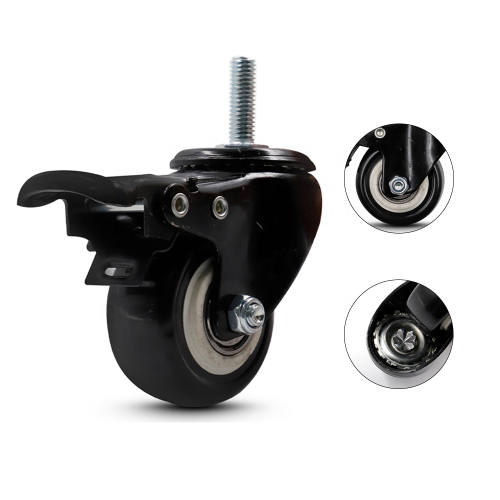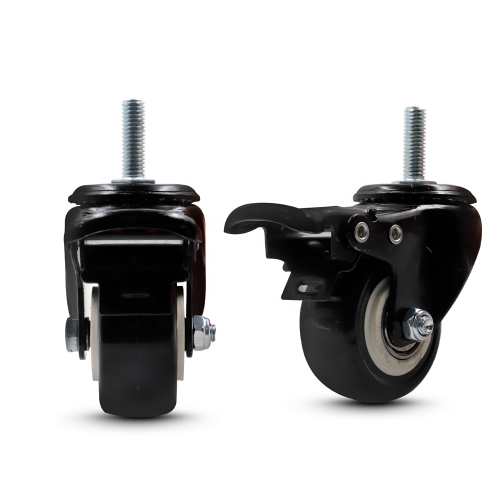When it comes to adding wheels to furniture and equipment, two popular options are locking casters and standard casters. Both serve a common purpose: mobility. However, they differ in one crucial aspect – locking casters offer the added benefit of stability. In this comprehensive comparison, we’ll break down the differences between these two types of casters and help you decide which one is the right choice for your furniture and equipment.
1. Mobility vs. Mobility and Stability
The most significant distinction between locking casters and standard casters is the presence of a locking mechanism. Standard casters provide easy mobility, allowing you to move your furniture or equipment smoothly in any direction. Locking casters, on the other hand, offer the same mobility but with an added feature – the ability to lock the wheel in place when needed. This extra layer of stability can be a game-changer in various scenarios.
2. When to Use Standard Casters
Standard casters are excellent for situations where mobility is the primary requirement. They are ideal for furniture that you may need to move around frequently, such as office chairs, dining chairs, or lightweight tables. Standard casters are also commonly used in settings where furniture or equipment doesn’t need to stay stationary for long periods.
3. When to Use Locking Casters
Locking casters come into play when you need the flexibility to move items as well as the assurance that they won’t move unintentionally. These casters are excellent for applications like:
- Heavy furniture or equipment that needs to stay in place when not in use.
- Items in a busy environment where there’s a risk of unintended movement, like a restaurant or a factory.
- Equipment that requires stability for safe operation, such as machinery in workshops.
4. The Convenience Factor
Locking casters offer the convenience of easily switching between mobility and stability with the press of a foot pedal or lever. This makes them suitable for furniture and equipment that need to adapt to different scenarios. For example, you can quickly lock the casters on your rolling kitchen island when you’re chopping vegetables, and then unlock them to move it out of the way when it’s time to serve dinner.
5. Weight Capacity
When considering casters, it’s essential to check the weight capacity. Locking casters are available in various weight ratings to accommodate the specific needs of your furniture or equipment. Be sure to select casters that can support the weight of the items they’ll be attached to, whether you choose standard or locking casters.
6. Price Considerations
In general, standard casters tend to be more budget-friendly than locking casters. If mobility is your primary concern and you don’t require the added stability of locking casters, this may factor into your decision.
7. Compatibility
Before choosing between locking and standard casters, consider the compatibility of your furniture or equipment. Ensure that the item can accommodate the type of caster you intend to install, whether it’s by screwing them onto the legs or using a mounting plate.
In conclusion, the choice between locking casters and standard casters ultimately depends on your specific needs. If you require both mobility and stability, locking casters are the way to go. Standard casters are perfect for situations where easy movement is the primary concern. Be sure to evaluate the weight capacity, convenience, and compatibility to make an informed decision that best suits your furniture or equipment. Both types of casters have their rightful place, and the choice comes down to the requirements of your particular application.


